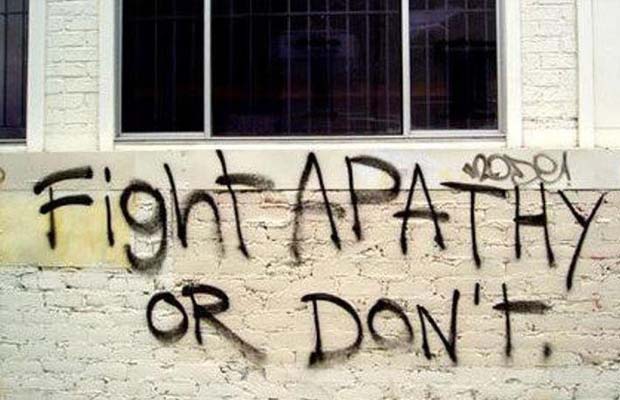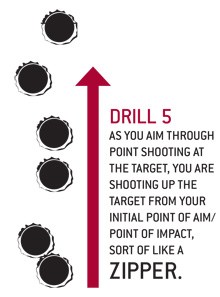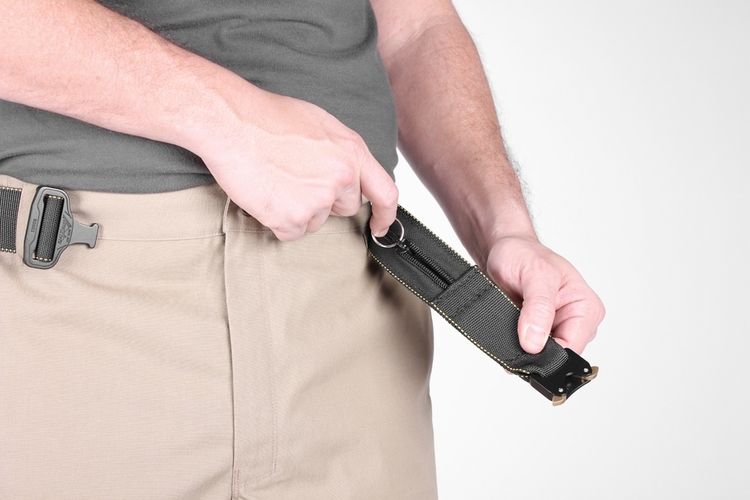Excuses That Might Get You Killed
Prepping is something that takes time, some level of commitment and usually finds its roots in some motivating reason or lifestyle characteristics. Preppers intentionally work toward a goal or measurement that can be held up to life for comparison. By preparing to have food stored over the winter, you may have a measurement of how long you can feed your family with those foods you are storing away. Food storage is just one example, but being prepared to a level that most would agree is some measure above their peers, takes work and it is so easy to make excuses to get out of that work.
Prepping follows life and comes, at least in my instance, in phases. There are times when I am more motivated by events in the news to get prepared. There are days when I have a little extra money and I can spend it on some piece of gear I have been meaning to acquire and there are times when I don’t really do anything that you can say would be a common trait of a prepper. I just exist and go about my day like anyone else.
There are phases to everything in life and certainly you can’t stay in a state of high alert all the time or you would eventually burn out. I plan on writing about that topic soon, but for this post I wanted to talk about the excuses people make to not start prepping in the first place. These comforting snippets we say either because we believe them to be true or use them as our get out of jail free card. By simply saying a problem doesn’t, exist we absolve ourselves of any guilt we might feel by doing nothing. It is far easier to say words than to act and today I wanted to try to address some of the excuses for not prepping that I have heard in the brief time I have been doing this.
The audience for these excuses are anyone who thinks prepping or getting prepared for emergencies in life is foolish.
Nothing will ever happen to me – This excuse has several evil step sisters and believe it or not some people believe that you can rely on the bible to escape having to do anything. If you believe something bad will happen to you, you obviously don’t have faith do you? I do have faith but I believe God gives us many things we can use to protect our lives. God has absolute control over everything I believe but he also gave us free will. We can choose to jump off a cliff and I am pretty sure anyone who tries that will die. An often quoted verse from the Bible is Proverbs 22:3 which says:
The prudent see danger and take refuge, but the simple keep going and pay the penalty.
I know how simple it is to pull a verse out of the Bible, devoid of all context and frame it in a way to match your argument, but this one for me seems consistent with so many other stories, parables and lessons from the Bible. God does intervene in the lives of people, but he also tells them what to do and expects them to follow suit in order to save themselves. Bad things happen all the time and I don’t think it is foolish to guard yourself against danger. If you can see problems happening down the road that could cause you harm and you do nothing about it, you will likely pay the price – one way or another.
The government will come to my rescue – This excuse for not prepping should be the one that anyone with half a brain would know is false. Government was not made to come and fly you off the roof of your home if it floods. You were given reason, logic and intelligence of self-preservation, if nothing else that should be guiding you to safety. Counting on the Government to save you is a waste of time in my opinion and I don’t want to wait around on anyone for the safety of my family. If a bad guy comes to my door, kicks it in and comes inside and says he is going to kill me and rape my wife do you think I am going to be calling 911?
Prepping is multi-faceted, but the core issue is taking responsibility for your own health and safety into your own hands. Don’t expect the government to show up and put you on a boat to happy town. You should have been prepared enough to get out-of-town before you needed to.
The banks will never close in America – They didn’t close in Greece or Cyprus did they? The banks most certainly didn’t close in Argentina either in 2002. Banks certainly wouldn’t have any reason not to give you the money you deposited with them because they are good honest people who have your own interests at heart. Yeah, if you believe that, I have some ocean front property in Arizona to sell you. Banks are if nothing else, in this business to make a profit. Some would say they are making obscene profits and I don’t dispute that but what I do know is they don’t have to give you your money. Ever.
When you deposit your money in a bank, they consider your money theirs and you as an uninsured creditor. You are simply loaning them the money, they get to do whatever they please and if they lose your money due to shady business practices, oh well. Too bad. Don’t believe for a second that if something goes south in the world of finance, that you have any guarantee of access to your money. They may open up in a couple of weeks if they are forced to close and only allow you to get out a small amount each week. Don’t let this happen to you. Make sure you have alternate plans for at least some portion of your finances.

There is no way the super markets will ever run out of food – Super markets depend on deliveries of food. They don’t make those pretty bottles, cans and bags in the back room. Just like they don’t make clothes in the store in the mall you go to. When the supply is gone, it has to be replenished. Some people get hung up on the amount of days that a typical grocery store has worth of food on hand. I have heard three days of food as a good guideline and for normal shopping that is probably right. When you go into the store, you will see how many packages of bread of the type you like to eat, maybe 2 dozen packages? What if that store was filled with hundreds of people in one day? How long do you think that food would last?
The grocery store should not be your last resort for food. The grocery store should augment the supply you already have at home which should be more than enough to eat for at least one month. I recommend a year, but you have to start somewhere. You don’t want to be the person walking into the grocery store after panic buying and complaining that there is no food. You won’t win any prizes for guessing incorrectly how much food they have on hand.
The government would never take your guns – I have two words for you, Martial Law. It was most recently implemented in a large-scale during hurricane Katrina and when that happened, they went door to door and confiscated firearms from law-abiding people. They didn’t go into crack town and take the guns away from the gangs, they took them from little old ladies. With the right reason, the government already has laws/orders on the books to confiscate firearms and if you think that could never happen, you must also think the government writes fairy-tales down to amuse themselves. Don’t believe me, just look at the video below.
You might think no person needs guns and that is fine if that is your belief, but I want to have something I can protect myself with. The only reason to take guns away from law-abiding citizens is to remove their ability to fight back. You may also think that the government doesn’t seem worried about anything and they would tell us if we were in trouble. I don’t think that is the case.
I will point out just some of the more interesting Executive Orders that are on the books currently. I am not saying which administration wrote these, but they are still current, so the government has some idea that bad times are possible or else, why the need for the following?
- EXECUTIVE ORDER 10990 allows the government to take over all modes of transportation and control of highways and seaports.
- EXECUTIVE ORDER 10995 allows the government to seize and control the communication media.
- EXECUTIVE ORDER 10997 allows the government to take over all electrical power, gas, petroleum, fuels and minerals.
- EXECUTIVE ORDER 10998 allows the government to take over all food resources and farms.
- EXECUTIVE ORDER 11000 allows the government to mobilize civilians into work brigades under government supervision.
- EXECUTIVE ORDER 11001 allows the government to take over all health, education and welfare functions.
- EXECUTIVE ORDER 11002 designates the Postmaster General to operate a national registration of all persons.
- EXECUTIVE ORDER 11003 allows the government to take over all airports and aircraft, including commercial aircraft.
- EXECUTIVE ORDER 11004 allows the Housing and Finance Authority to relocate communities, build new housing with public funds, designate areas to be abandoned, and establish new locations for populations.
- EXECUTIVE ORDER 11005 allows the government to take over railroads, inland waterways and public storage facilities.
- EXECUTIVE ORDER 11051 specifies the responsibility of the Office of Emergency Planning and gives authorization to put all Executive Orders into effect in times of increased international tensions and economic or financial crisis.
- EXECUTIVE ORDER 11310 grants authority to the Department of Justice to enforce the plans set out in Executive Orders, to institute industrial support, to establish judicial and legislative liaison, to control all aliens, to operate penal and correctional institutions, and to advise and assist the President.
- EXECUTIVE ORDER 11049 assigns emergency preparedness function to federal departments and agencies, consolidating 21 operative Executive Orders issued over a fifteen year period.
- EXECUTIVE ORDER 11921 allows the Federal Emergency Preparedness Agency to develop plans to establish control over the mechanisms of production and distribution, of energy sources, wages, salaries, credit and the flow of money in U.S. financial institution in any undefined national emergency. It also provides that when a state of emergency is declared by the President, Congress cannot review the action for six months. The Federal Emergency Management Agency has broad powers in every aspect of the nation.
I can hear someone saying now – “Well, of course the government is in control of those things, I mean they are the government right”? Read it again and take a look at the topics covered by these Executive Orders. The government has plans for things going so bad that they will have to come in and control every aspect of our lives. They see the potential for disaster. Shouldn’t you?
FEMA recommends three days’ worth of food so that should be enough – The last time we had a good winter storm, the roads weren’t cleared near my home for a week. Yes, we got out but that was a simple storm. What if something really bad happens? Do you think three days is enough? What if the power is out during that same storm for 5 days? Would you want to trust that no matter what the situation was, that it would be over, all sorted out, cleaned up and back to normal in three days?
FEMA’s recommendations in my opinion are better than nothing, but they should not be considered all you need. You need to plan for feeding your family forever, not just for three days. Granted, we can’t put millions of pounds of food in our homes, but they still don’t have New Orleans back to the way it was before Katrina. Sure you can buy groceries now, but do you want to take the risk that three days is all you need?
I don’t have money to spend on prepping supplies – What do you spend your money on? Do you get your nails done? Do you pay hundreds of dollars for satellite TV? What about that Xbox? How many times a week do you get a $4 coffee? Are you paying for some music download service so you can hear all of the Johnny Mathis you want anytime, anywhere?
Most of us spend money we don’t need to spend on some luxuries and I do it too, but I have made preparations for my family. I did sacrifice on some of the things I wanted so I could have supplies to keep my family fed, with clean water and shelter and security if our house disappeared tomorrow. Life is all about priorities for most of what we do. If you can look at your family while they are starving and say, sorry Johnny, I had to have the Prime Time ESPN package so I couldn’t buy any more groceries for you, that is on your head.
I don’t have room for extra food in my house – Unless you are living in a van down by the river, you have room. If you don’t have room, get rid of some of the stuff in your house. You can store food under beds, in bookshelves, in your kitchen cabinets, in hall closets, under your kid’s beds, behind the chairs in the living room. There are places to put food if you are looking and not having any place to store food is no excuse. Do you have room for that flat screen TV?
I don’t want people to think I am crazy – I don’t want to see my family hurt or suffering. I don’t care what people think about me as long as my family is safe and alive. I would happily be the brunt of a million jokes than have to look at my family and apologize for not doing what I could to take care of them.
Even if you are completely alone, what do you care what anyone thinks about you? You brush your teeth so you don’t get cavities I hope. You have health insurance if you get sick and car insurance if you get in a wreck. Why is having a little insurance for other emergencies so crazy? Get over yourself and start taking steps to be prepared or you could end up dead. Yes, if you don’t do anything to help yourself, if you keep your head in the sand you might be caught up in a world you don’t like. The worst thing that could happen to preppers if we are wrong is that we spent some money on food that lasts 25 years or guns we never have to use. Which side of that reality do you want to be on?
I am not perfect and I wouldn’t hold my preps up as the end all be all, but I am on that journey toward preparedness. I like to think I am pretty far down that road and I am just trying to get as many others on the path as possible. What do you have to lose besides your life?
Prepping is something that takes time, some level of commitment and usually finds its roots in some motivating reason or lifestyle characteristics. Preppers intentionally work toward a goal or measurement











 Full combat grip on holstered gun.
Full combat grip on holstered gun. Drill 4: Elbow Up. Elbow Down.
Drill 4: Elbow Up. Elbow Down. One-quarter hip retention point shooting position.
One-quarter hip retention point shooting position. DRILL 5 as you aim through point shooting at the target, you are shooting up the target from your initial point of aim/point of impact, sort of like a zipper.
DRILL 5 as you aim through point shooting at the target, you are shooting up the target from your initial point of aim/point of impact, sort of like a zipper.



 S.O. Tech RSB-L-BLK Riggers SERE Belt – Stash pocket allows you to hide escape tools
S.O. Tech RSB-L-BLK Riggers SERE Belt – Stash pocket allows you to hide escape tools
 Irrational fear can derail your prepping plans. Learn to control it now.
Irrational fear can derail your prepping plans. Learn to control it now.









